The team has published a number of research publications and conference presentations – these are shown as a full list below. Publications are related to research projects as studying and evaluating our day to day work as an assistive technology team.
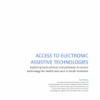
This report describes the process, results, and recommendations of a project, funded by South Yorkshire Integrated Care Board, exploring the local pathways and services that support and provide electronic assistive technology for people who have health and care needs. Executive summary In 2015 specialised services were established for Alternative and Augmentative Communication (AAC) and Environmental Control (EC), with the goal ...
November 2023

Communication aids are an aided AAC medium that can improve communication for those who otherwise experience difficulties with speaking. Voice output communication aids (VOCAs) provide speech output based on the user’s input and typically use speech synthesis technology. VOCAs present a challenging design brief. Using technology to support face to face communication is a unique challenge that is further compounded ...
July 2023

Few studies have investigated how individuals with partially intelligible speech choose to communicate, including how, when, and why they might use a speech-generating device (SGD). This study aimed to add to the literature by exploring how this group of individuals use different communication strategies. Qualitative interviews were carried out with 10 participants with partially intelligible speech with the aim of ...
June 2023

In this article in Bulletin, Helen reflects on the impact of terminology when describing the tools in an AAC toolkit. Kindly reprinted/archived with permission of the RcSLT. It’s long been accepted that the augmentative and alternative communication (AAC) journey starts with ‘low-tech’ systems, such as signing, Picture Exchange Communication System (PECS) books and symbol boards, and ultimately leads to a ...
March 2020

Objectives Many children with varied disabilities, for example, cerebral palsy, autism, can benefit from augmentative and alternative communication (AAC) systems. However, little is known about professionals’ decision-making when recommending symbol based AAC systems for children. This study examines AAC professionals’ preferences for attributes of AAC systems and how they interact with child characteristics. Design AAC professionals answered a discrete choice experiment survey ...
November 2019
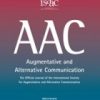
Existing research suggests the provision of communication aids for children with complex communication needs can have significant positive impacts on health and quality-of-life. The process of clinical decision-making related to the recommendation of high-tech communication aids is not well documented or evaluated, and research evidence related to the provision of these aids remains limited. This study aimed to understand the ...
July 2019

High-tech communication aids are one form of augmentative and alternative communication (AAC) intervention offered to children following an assessment process to identify the most appropriate system based on their needs. Professional recommendations are likely to include consideration of child characteristics and communication aid attributes. Recommendations may be influenced by contextual factors related to the cultural work practices and service context ...
June 2019

Purpose People who have complex communication needs (CCN), and who use augmentative and alternative communication (AAC) to help them express themselves, can be difficult to engage in decision making about their healthcare. The purpose of this review was to identify what patient-reported outcome measures (PROMs) have been employed with people who use AAC. Of the tools identified, the review aimed ...
June 2019
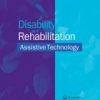
Background: Symbol communication aids are used by children with little or no intelligible speech as an Augmentative and Alternative Communication strategy. Graphic symbols are used to help support understanding of language and used in symbol communication aids to support expressive communication. The decision making related to the selection of a symbol communication aid for a child is poorly understood and little ...
April 2019

The choice of which AAC device to provide for a child can have long lasting consequences, but little is known about the decision-making of AAC professionals who make recommendations in this context. A survey was conducted with AAC professionals using best–worst scaling methodology examining what characteristics of children and attributes of AAC devices are considered most important in decision-making. A ...
February 2019
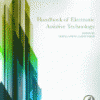
Integration of assistive technology may be an empowering tool for individuals with multiple disabilities; however, for this to be successful a number of factors need to be considered. This chapter will focus on defining integration of technology, history of integration, reasons for integration, factors to consider when considering integration and describes various models of integration along with their potential benefits and disadvantages ...
January 2019

OBJECTIVE: To involve people living with amyotrophic lateral sclerosis (plwALS) in the scoping and identification of research priorities related to the changes in ALS communication including the use of augmentative and alternative communication (AAC). METHODS: Two focus groups of plwALS at early and late stages of change to speech intelligibility were carried out as a patient and participant involvement exercise ...
October 2018
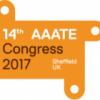
This study examines the potential application of an EMG technology as an assistive control method for individuals with severe physical disabilities. The usability and acceptability of a prototype EMG switch was evaluated with health care professionals, researchers and end users using participatory approaches ...
September 2017
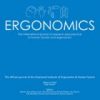
Purpose: Identify location and intensity of discomfort experienced by healthy participants wearing cervical orthoses. Method: Convenience sample of 34 healthy participants wore Stro II, Philadelphia, Headmaster, and AspenVista® cervical orthoses for four-hour periods. Participants reported discomfort level (scale 0–6) and location. Results: Participants reported mean discomfort for all orthoses over the four-hour test between ‘a little discomfort’ and ‘very uncomfortable’ (mean ...
July 2017

AAC service provision in the United Kingdom (UK) has evolved since the first service dedicated to the provision of communication aids opened in 1986. Within the UK, many health and care services are provided via government funding; however, the assessment and provision of AAC and specifically of speech-generating devices (SGDs) is inconsistent and inequitable. The study reported in this paper ...
July 2017
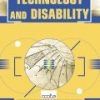
BACKGROUND: Provision of Augmentative and Alternative Communication (AAC) interventions have been acknowledged to be highly variable in England and elsewhere. OBJECTIVE: The aim of the project described in this paper was to provide data to inform service planning and delivery of services delivering AAC including communication aids. METHODS: A survey was developed by an expert group and administered by telephone interview ...
January 2017

Alert and transiently nonvocal intensive care unit (ICU) patients are dependent on augmentative and alternative communication (AAC). Unfortunately, the literature demonstrates that existent AAC devices have not been widely adopted, and unaided methods are often the primary modalities used despite being insufficient, and frustrating. We present the results of a qualitative semi-structured interview study with 8 ex-ICU patients, 4 ICU ...
October 2016
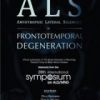
Current practice and guidelines recommend the use of neck orthoses for people with amyotrophic lateral sclerosis (ALS) to compensate for neck weakness and to provide surrogate neck control. However, available options are frequently described by patients as restrictive and unsuitable and there was a need for a new device that addressed the needs of people with ALS. This project utilized ...
August 2016
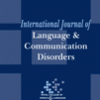
Background: Commissioners and providers require information relating to the number of people requiring a service in order to ensure provision is appropriate and equitable for the population they serve. There is little epidemiological evidence available regarding the prevalence of people who could benefit from augmentative and alternative communication (AAC) in the UK. Aim: To determine the prevalence of people who ...
April 2016
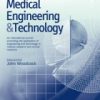
Use of voice output communication aids (VOCAs) can be a very effective strategy to assist people with speech impairments in communicating. Despite this, people who use communication aids often express frustration with VOCAs—desiring devices that are simpler, quicker and more effective to use. Whilst it is not possible to resolve all these issues with technology, it is argued that significant ...
October 2015

This paper presents the Head-Up project, that aims to provide innovative head support to help improve posture, relieve pain and aid communication for people living with progressive neck muscle weakness. The initial focus is motor neurone disease. The case study illustrates collaborative, interdisciplinary research and new product development underpinned by participatory design. The study was initiated by a 2-day stakeholder ...
October 2015

The aim of the project reported in this paper is to investigate the potential for 'SpeakerID' to improve the effectiveness of communication aids. SpeakerID is software that detects who you are talking to. This would allow a communication aid to 'know' who was talking to the person using the communication aid and adapt its interface accordingly. SpeakerID is an example ...
September 2014

The work in the UK described here reports on a survey of services providing AAC in England. Previous work (1) in the UK concentrated on understanding the makeup of specialised or dedicated AAC services. The work summarised in this paper aimed to survey the provision of services working at a local or universal level. The context of this work is ...
July 2014

This paper presentation describes the initial stages in a programme of work investigating the decision making processes that take place around the choice of symbolic vocabularies for children and young people who use, or could use, aided communication. The overall aim of this work is to inform the decision making processes in the selection of communication systems with the hope ...
July 2014

Data from studies looking at the user requirements for environmental control systems is used to give context to the current use of these systems. Also described are a range of ‘future looking’ r&d that aim to create the next generation of EC systems. Presented at the British Academy of Childhood Disability (BCAD) 2014. <iframe id="iframe_container" frameborder="0" webkitallowfullscreen="" mozallowfullscreen="" allowfullscreen="" width="550" ...
April 2014

How are symbolic vocabularies described and analysed how do we choose between them? This presentation investigates... <iframe id="iframe_container" frameborder="0" webkitallowfullscreen="" mozallowfullscreen="" allowfullscreen="" width="550" height="400" src="https://prezi.com/embed/0ykh4nuki4ty/?bgcolor=ffffff&lock_to_path=0&autoplay=0&autohide_ctrls=0&landing_data=bHVZZmNaNDBIWnNjdEVENDRhZDFNZGNIUE43MHdLNWpsdFJLb2ZHanI0amhzWk9ld2VJeXVXalhlUFdXWDFpUXJBPT0&landing_sign=eweGSa1NV-YAQOarqbRO9GnNRatK-z3xWtEvSiFZTaQ"></iframe> ...
March 2014

Background: Voice output communication aids (VOCAs) are a key form of aided communication within the field of augmentative and alternative communication (AAC). In recent years, rapid developments in technology have resulted in an explosion of devices available commercially, yet little research has been conducted into what people who use VOCAs think about them. Aims: The aim of this research was to explore ...
June 2013
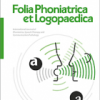
Background/Aims: In the last 20 years the range of high-technology augmentative and alternative communication (AAC) aids has rapidly expanded. This review aimed to provide a ‘state of the art’ synthesis, to provide evidence-based information for researchers, potential users and service providers. Methods: Electronic databases were searched from 2000 to 2010, together with reference lists of included papers and review papers. The review ...
October 2012

Discussing the potential for communciation aids for people with dysarthric speech. Presented at ISAAC 2012, 1st August 2012, Pittsburgh, USA and CM 2012, 25th Sept 2012, Leicester, UK. <iframe id="iframe_container" frameborder="0" webkitallowfullscreen="" mozallowfullscreen="" allowfullscreen="" width="550" height="400" src="https://prezi.com/embed/5lsb2urz17p2/?bgcolor=ffffff&lock_to_path=0&autoplay=0&autohide_ctrls=0&landing_data=bHVZZmNaNDBIWnNjdEVENDRhZDFNZGNIUE43MHdLNWpsdFJLb2ZHanI0c2tMMENxKzUrQVlHcnZZN2I4T0pMTU13PT0&landing_sign=2hvvg4Tyka9mPABgrh66ha39AN-mcbg5SmPO1iX3ig4"></iframe> ...
August 2012

Background: There has been a rapid growth in recent years of available technologies for individuals with communication difficulties. Research in the area is currently underdeveloped with practitioners having a limited body of work on which to draw to guide the process of intervention. Concerns have been raised that this newly developed technology may have limited functional usage. Aims: This review aims to ...
March 2012

Investigating the design considerations in creating a communication aid which can recognise some dysarthric speech. Presented at CM 2011. <iframe id="iframe_container" frameborder="0" webkitallowfullscreen="" mozallowfullscreen="" allowfullscreen="" width="550" height="400" src="https://prezi.com/embed/bjkxnkkdknln/?bgcolor=ffffff&lock_to_path=0&autoplay=0&autohide_ctrls=0&landing_data=bHVZZmNaNDBIWnNjdEVENDRhZDFNZGNIUE43MHdLNWpsdFJLb2ZHanI0aTI4TFp0ZDMyaWhnSTBvZUpaZlAvNHJ3PT0&landing_sign=-NT4ltHOLEgE3-FPmohfwu9Q0Ku_j7G1ZQ7pop8-Oxk"></iframe> ...
September 2011

A presentation setting out some of the constraints around the design of communication aids - in particular considering communication aids for people with moderate dysathria. Presented at CM 2011. <iframe id="iframe_container" frameborder="0" webkitallowfullscreen="" mozallowfullscreen="" allowfullscreen="" width="550" height="400" src="https://prezi.com/embed/kdhnpcdom_bg/?bgcolor=ffffff&lock_to_path=1&autoplay=0&autohide_ctrls=0&landing_data=bHVZZmNaNDBIWnNjdEVENDRhZDFNZGNIUE43MHdLNWpsdFJLb2ZHanI0VDBJUVJrcTErUGFid0ZQTEJ4cVcybFJBPT0&landing_sign=3fcwEA7UbROtFX762Ta89V8Wed1IzuJR4nyAB8EhEBc"></iframe> ...
September 2011
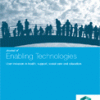
This study set out to collect data from assistive technology professionals about their provision of speech‐driven environmental control systems. This study is part of a larger study looking at developing a new speech‐driven environmental control system. A focus group for assistive technology professionals was conducted. This focus group was recorded, transcribed and then analysed using a framework approach. The analysis ...
March 2011

Purpose. To explore users' experiences and perceptions of speech-driven environmental control systems (SPECS) as part of a larger project aiming to develop a new SPECS. The motivation for this part of the project was to add to the evidence base for the use of SPECS and to determine the key design specifications for a new speech-driven system from a user's perspective ...
January 2009